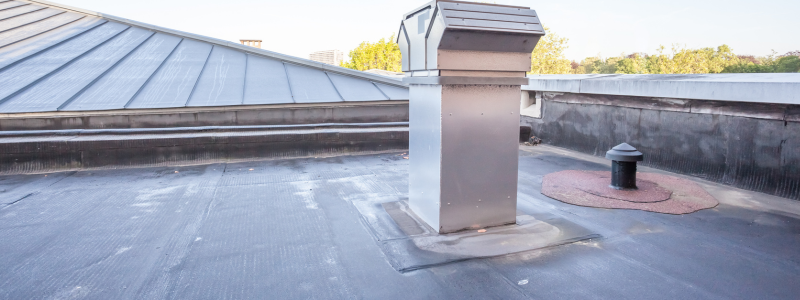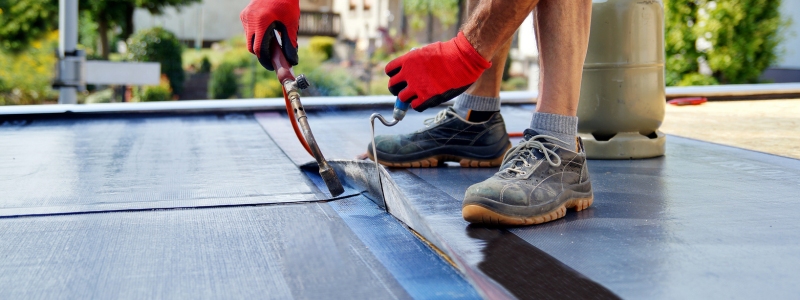
Flat Roof Leaks in Heavy Rain
From residential homes to commercial buildings, flat roofs have become increasingly popular in Denver and across the Front Range due to their modern aesthetic and cost-effectiveness. Yet, when the rainy season arrives, flat roof leaks in heavy rain can become a significant issue. This guide will provide you with essential knowledge and practical solutions for preventing and fixing these leaks.

Why Flat Roofs Leak
Flat roofs, as the name implies, are not entirely flat. They have a slight pitch for water drainage. However, due to their low slope, water tends to drain slower than on other pitched roofs. Heavy rain can lead to pooling water, which increases the risk of leaks.
Here’s why:
- Aged Roofing Material: Over time, exposure to harsh weather conditions can weaken the roofing material, making it susceptible to leaks.
- Poor Drainage: Insufficient or clogged drainage systems can cause water to pool, exerting pressure on the roof and causing leaks.
- Faulty Installation: If your flat roof wasn’t installed correctly, it might have imperfections that allow water ingress.
How to Stop a Flat Roof from Leaking in the Rain
First, let’s clear up one important point. If you’re dealing with flat roof leaks in heavy rain, you’ll want to wait until the weather clears before attempting any repairs for safety reasons.
To stop a flat roof from leaking, you need to identify the source of the leak, which can be challenging as the entry point isn’t always located where the leak appears. Once the source is identified, small punctures can often be repaired with roofing cement while larger issues may require a roofing membrane or professional help from B&M Roofing.

Is it Normal for Water to Puddle on a Flat Roof?
A small amount of water pooling on your flat roof for up to 48 hours after rain can be normal. This is due to the roof’s low slope which slows drainage. However, if water remains longer than this, it can lead to serious problems, including leaks and structural damage.
How to Stop Water Pooling on a Flat Roof
Stopping water pooling on a flat roof involves improving the roof’s drainage system. Here’s how:
- Regular Cleaning: Debris like leaves, branches, and dirt can clog your drains, leading to water pooling. Regular cleaning can prevent this.
- Install Additional Drains: If your current drainage system is insufficient, consider installing additional drains or scuppers.
- Create Tapered Areas: If persistent water pooling is a problem, professionals can create tapered areas on the roof to improve water flow.

How to Waterproof and Seal a Flat Roof
Waterproofing and sealing a flat roof are essential to prevent flat roof leaks in heavy rain. There are several methods to achieve this, including:
- Roof Coating: This involves applying a waterproof coating over the entire roof. It fills cracks and crevices, providing a watertight seal.
- Modified Bitumen: This is a type of roofing material designed to be highly waterproof. It’s excellent for flat roofs in areas with heavy rainfall.
- Single-Ply Membrane: This roofing material is durable, resistant to tears, and highly waterproof.
- Regular Maintenance: Regular inspections and maintenance are key to keeping your roof waterproof. Small issues can be caught early before they become major leaks.
B&M Roofing: Colorado’s Flat Roof Experts
Flat roofs can be excellent choices for both residential and commercial buildings. However, managing and preventing leaks, particularly during heavy rain, is essential for their longevity and performance.
Remember, safety first!
If you’re dealing with leaks, professional companies like B&M Roofing are just a call away.
We are experienced in handling all types of roofing repairs, including flat roofs, metal roofs, and tile roofs, ensuring your property remains secure and dry, no matter the weather.




































